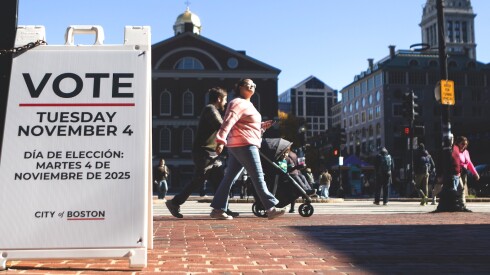Latest News
Two investigator positions meant to tackle school discrimination cases went unfilled for over a year and a half, illustrating how bureaucracy can slow even urgent state priorities.
A new California law overrides local regulations to provide multifamily housing around transit corridors. Can it succeed in finally getting much-needed housing built? And is sprawl really such a bad thing?
The issues that drove the winning campaigns reflected a mix of local and national concerns, and the results pointed to divergent, sometimes contradictory, priorities for big-city voters.
After generations in supporting roles, Black women are now leading some of America’s largest cities and reshaping how cities confront challenges from housing to public safety.
The Zone Zero regulations, designed to keep embers from igniting homes, have drawn more than 4,000 public comments and fierce debate over plants, property rights and policy.
Denver, Minneapolis and other cities want to avoid paying large sums owed to victims of some types of misconduct. But will the officers pay up?
The media and politicians focus on which party is winning or losing congressional seats. But moving 20 million Americans into new districts mid-decade will represent a major tear in the fabric of representative democracy.
States are reducing subsidy slots, slashing provider reimbursement rates and raising co-pays for low-income parents amid shrinking federal aid.
With hospitals operating on margins as low as 1 percent, new federal policy changes could undercut care access in rural communities.
Results in New Jersey, Virginia and key ballot measures highlight voter unrest with the status quo — and raise new questions about Republican momentum heading into 2026.
Abigail Spanberger’s comfortable win in the Virginia governor’s race Tuesday, and Mikie Sherrill’s in New Jersey, gave Democrats their biggest electoral triumphs since Trump’s return to power.
Kentucky Secretary of State Michael G. Adams is one of the few public officials who's found a way to address both election security and ballot access concerns.
The federal funding reductions and new eligibility rules will have severe consequences for those with substance use disorders and returning from incarceration. States have ways to keep many of them covered.
Sherrill’s decisive victory over Republican Jack Ciattarelli keeps the governor’s mansion blue for a third straight term, fueled by suburban voters and anti-Trump momentum.
State officials hope to cut chronic absenteeism by 50 percent within five years as schools experiment with mentoring, family outreach and more engaging classroom models.
Typhoon Halong battered remote communities on Alaska's west coast last month. The state faced unique obstacles in getting people to safety — and it faces even more as it looks toward rebuilding.
A 21st-century president and a revolutionary-era rascal have something in common: the Insurrection Act.
City Council President Mary Sheffield holds a commanding lead in the race to succeed Mayor Mike Duggan, signaling a milestone moment for women — and Black women — in Michigan politics.
The city’s long-delayed groundwater project will serve 500,000 by 2027, reducing dependence on imported water and strengthening drought resilience.
Federal officials said $4.65 billion from SNAP reserves will be released to meet a court order, but warned states may face weeks of delays processing partial benefits.
Home prices have begun to stabilize ever so slightly in the last few months after years of rapid growth. Experts don’t expect them to plummet anytime soon.
Holding city council meetings downtown during weekday business hours makes them inaccessible to too many residents. To open up civic participation, local governments should rethink their scheduling and make the most of electronic tools.
New testing standards, staffing strains, and persistent absenteeism are testing the sustainability of the state’s post-pandemic academic rebound.
The Living Donor Support Program will cover up to $14,000 in expenses under a statewide initiative expected to assist up to 500 people annually.
The possibility that Congress could reach a deal on ACA subsidies has thrown this year’s open enrollment period into chaos. State leaders are gaming out strategies just in case.
Actors in and out of government continue to cast doubt on election integrity. What makes accusations stick, and what can states do about them?
Conservatives backed criminal justice reforms in hopes of driving down corrections costs and state budgets. A lot of violent and repeat offenders would have to be released to achieve real savings.
At the Western Governors’ Association workshop in Denver, officials discussed how to modernize transmission, permitting and funding to meet a projected 20-35 percent surge in electricity demand.
Tina Kotek joins the governors of at least 12 other mostly Democrat-led states — including Washington and California — in diverting millions in state money to backfill the lost federal funding to SNAP.
Gov. Tim Walz halted payments and ordered an independent audit across 14 high-risk programs amid growing political pressure.
Sponsored
Most Read
















































